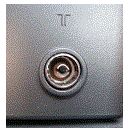If the signal is not consistently strong, the following settings can be adjusted to prevent channel loss:
1. Disable the automatic channel update.
• Press the “Home” button on the remote control of the television and select:
[Setup] > [Channel settings] > [Channel installation] > [Automatic channel update] > [OFF]
Or
Press the “Settings” button on the remote control of the TV and select:
[All settings] > [Antenna/Cable Installation] > [Automatic channel update] > [OFF]
Or
Press the “Settings” button on the remote control and select: [All settings] > [Channels] > [Antenna/Cable Installation] > [Automatic channel update] > [OFF]
• The channel list will no longer be updated. Proceed with step 3 above to re-install a new or updated channel list if required.
2. Disable the automatic channel update message.
• Press the “Home” button on the remote control of the television and select:
[Setup] > [Channel settings] > [Channel installation] > [Channel update message] > [OFF]
Or
Press the “Settings” button on the remote control of the TV and select:
[All settings] > [Antenna/Cable Installation] > [Channel update message] > [OFF]
Or
Press the “Settings” button on the remote control and select: [All settings] > [Channels] > [Antenna/Cable Installation] > [Channel update message] > [OFF]
Note: For a long-term solution it is recommended to improve the DVB signal and enable the automatic channel update again.



